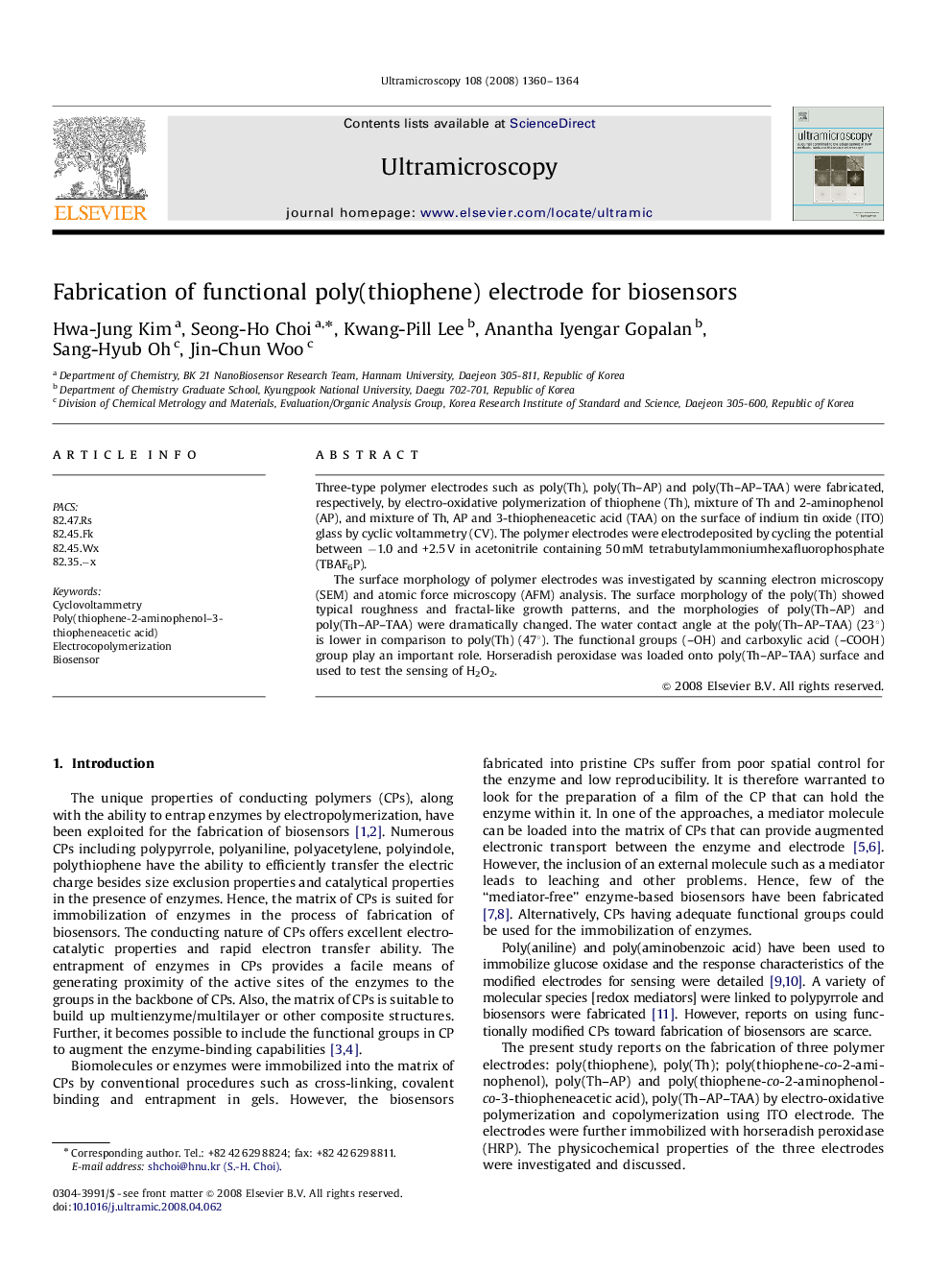| Article ID | Journal | Published Year | Pages | File Type |
|---|---|---|---|---|
| 1678455 | Ultramicroscopy | 2008 | 5 Pages |
Three-type polymer electrodes such as poly(Th), poly(Th–AP) and poly(Th–AP–TAA) were fabricated, respectively, by electro-oxidative polymerization of thiophene (Th), mixture of Th and 2-aminophenol (AP), and mixture of Th, AP and 3-thiopheneacetic acid (TAA) on the surface of indium tin oxide (ITO) glass by cyclic voltammetry (CV). The polymer electrodes were electrodeposited by cycling the potential between −1.0 and +2.5 V in acetonitrile containing 50 mM tetrabutylammoniumhexafluorophosphate (TBAF6P).The surface morphology of polymer electrodes was investigated by scanning electron microscopy (SEM) and atomic force microscopy (AFM) analysis. The surface morphology of the poly(Th) showed typical roughness and fractal-like growth patterns, and the morphologies of poly(Th–AP) and poly(Th–AP–TAA) were dramatically changed. The water contact angle at the poly(Th–AP–TAA) (23°) is lower in comparison to poly(Th) (47°). The functional groups (–OH) and carboxylic acid (–COOH) group play an important role. Horseradish peroxidase was loaded onto poly(Th–AP–TAA) surface and used to test the sensing of H2O2.
